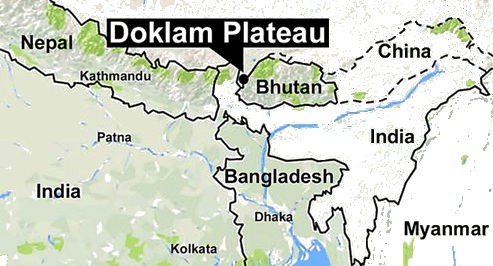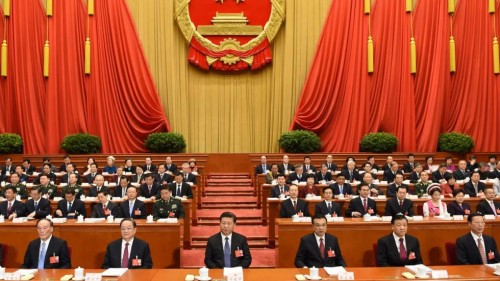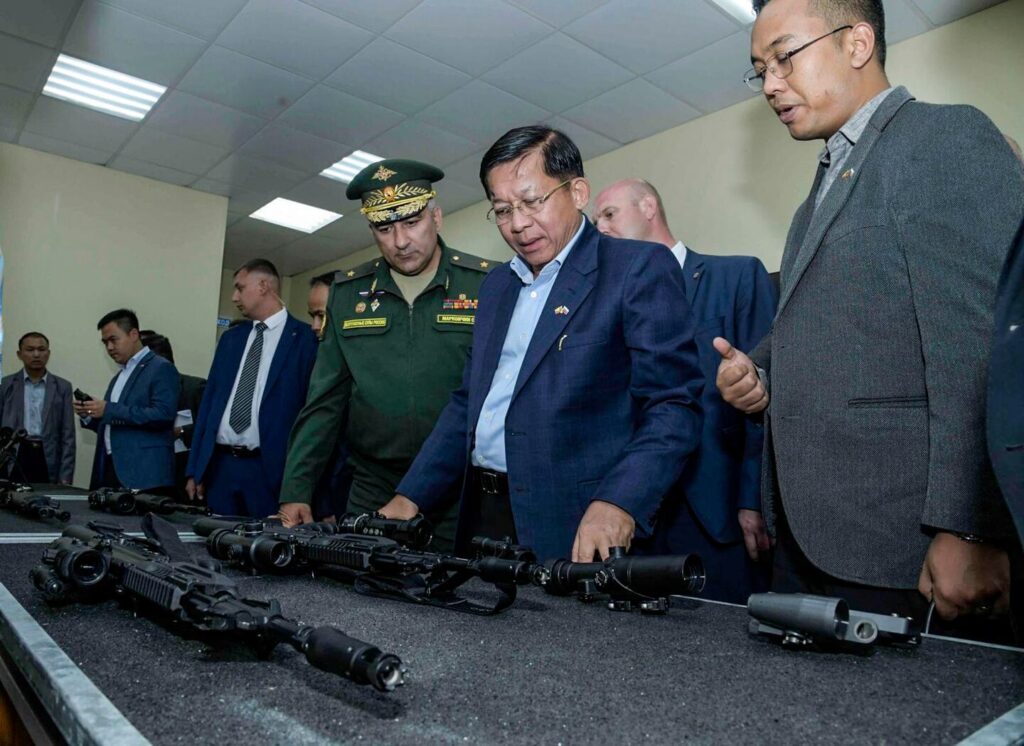MANTRAYA ANALYSIS#19: 14 NOVEMBER 2017
SHANTHIE MARIET D’SOUZA
Abstract
The Doklam standoff appears to have unveiled a new era of India’s China policy. Does this standoff mark a turning point in their relationship or will it be a continuation of the status quo? Does it portend a trend of increased belligerence and distrust that could bring the two giants on a collision course? Or will they adopt a more conciliatory approach if such incidents were to reoccur? Even though the conflict might not have been fully resolved and the probability of recurrence in the near future remains high, a combination of determined posture and astute diplomacy can succeed in protecting India’s interests vis-a-vis China’s aggressive postures in South Asia and the neighbourhood.

Dust has apparently settled in Doklam, where the two Asian giants- India and China- were involved in a longest standoff in three decades. Amid media reports of continued Chinese activities, the Indian ministry of External Affairs clarified on 27 October 2017 that there has been no new development in Doklam[i]since the “expeditious disengagement ” of border personnel in Dolam, part of Doklam region in August 2017. The “Game of chicken” in international relations provides a useful framework to analyse such standoffs and their outcome. When two countries adopt confrontational and unyielding postures, one country must veer off to avoid a clash that may be detrimental to both countries. The dispute in Doklam which began with the Chinese road building project drew both countries into a tense face off in a third country signifying a larger competition for regional and global influence. And in the end,China’s decision to refrain from executing its road building project helped end the six weeks-long standoff in the Himalayas.
Seen as a ‘face–saving formula’, most international analysts contend that the termination of the standoff was apparently timed to ease tensions ahead of a high-profile BRICS summit in Xiamen (China) from 3-5 September 2017.[ii] During the three day summit, Chinese President Xi Jinping told Indian Prime Minister Narendra Modi that he wants to put the relationship on the “right track”. Both leaders held an hour-long meeting, which Modi described as “fruitful”. Additional conciliatory statements were made by Indian foreign secretary who said, “Both (India and China) know what happened. So, this was no backward-looking conversation, this was forward-looking conversation… It is natural that between large powers there would be areas of difference and it should be handled with mutual respect.”[iii] Beijing, on the other hand, reiterated its commitment to work with India on the basis of Panchsheel, the Five Principles of Peaceful Coexistence to improve political mutual trust, promote mutually beneficial cooperation. It is time, hence, beyond these official pronouncements for introspection as to what this standoff means for the relationship of these two major Asian powers and how it may shape power equations in Asia.
Change or Return to the Status Quo
A fragile peace has been maintained at the 3488-kilometre un-demarcated India China border for several decades. However, it camouflages a disconcertingly tactical situation along select portions of the Line of Actual Control (LAC) wherein the two countries do not have agreement on the location of the LAC neither on the ground nor on the map. As a result, hundreds of transgressions by Chinese border patrols occurs annually. While China doesn’t publicly track Indian transgressions,estimates of nearly 2500 Chinese transgressions have been recorded by India on the LAC since 2010.[iv] On some occasions, accompanied by saber-rattling political statements, these have devolved into more serious intrusions. In 2013 and 2014, the People’s Liberation Army (PLA) spent several weeks camped across the LAC in the Western sector – Depsang plains (April-May 2013), Chumar (2014 and 2015) and in the Barahoti area of the Middle sector in mid-2016. The Nathu La incident of 1967 and the Sumdorong Chu incident of 1986-87 are etched in the memory of Indian policy makers and military planners.
What makes the Doklam crisis an interesting case study is that it did not fall into the traditional category of India-China territorial dispute but took place in a third country which has acted as a ‘buffer’. The stand-off was near the India-China-Bhutan tri-junction, and in an area where both China and Bhutan hold competing territorial claims. The standoff therefore was technically related to the Sino-Bhutan border dispute. Nevertheless, Indian involvement was a function of its special relationship with Bhutan and the proximity of the standoff to its strategically vulnerable “Chicken’s Neck” – the narrow (21 kilometre) sliver of territory connecting the Indian mainland to strategically important northeastern region. Although the Border Defence Co-operation Agreement of 2013[v] does not stipulate anything specifically regarding the tri-junction boundary points between India, China, and third countries, New Delhi viewed this incident as a unilateral attempt to determine a tri-junction point. For all practical considerations, the standoff therefore turned out to be an extension of the India-China border dispute.
Amidst contested media narratives and vitriolic statements, the announcement of disengagement of forces (reportedly the Chinese forces only moved few hundred metres back) and the subsequent statements of both countries underlined that neither side sought an escalation and a return to the pre-June 16 status quo was necessary. External geopolitical factors and domestic imperatives restrained the two powers in pursuing a path of all out confrontation. On 27 October, the Chinese Consul General in Kolkata Ma Zhanwu said, “Doklam is behind us… In the new era, I believe, China-India relations will continue to develop with joint efforts.”[vi]
The fact of the matter, however, remains that neither side can afford a war at this point in time. China has a North Korean problem, and India has a Pakistan problem. In addition, both are working together on multilateral forums like the Asian Infrastructure Bank and BRICS, building of the Bangladesh-China-India-Myanmar economic corridor and are aspiring members of the Regional Comprehensive Economic Partnership (RCEP), an under negotiation trade accord.But even with such economic underpinnings of the relationship, their growing regional footprints and spheres of influence have come to unavoidably collide against each other in third countries with increasing frequency. Doklam is a case in point.
Domestic Constraints & Changing Geo-Political Configurations

(The 19th Congress of the Chinese Communist Party (CCP) was held in Beijing
between 18-24 October 2017)
The reasons for China’s reluctance to escalate the crisis in Doklam emanated primarily from its domestic constraints- President Xi Jinping was attempting to consolidate his position during the 19thParty Congress.A prolonged face off which provides no clear winner would have impactedon his standing within the party but also would have tainted China’s international image and underminedthe internationalism which it is trying to promote through the Belt and Road initiative. It would also have fuelled anti-Chinese sentiment in India, benefiting both Washington and Tokyo.
According to Chinese scholars, the withdrawal of troops was a ‘win-win’ for both countries. A lengthy confrontation or an escalating conflict would have been truly harmful. As Doklam shows, India could convince China not to proceed with its road-building, but China did not relinquish its claims or its established pattern of presence in the area. The ‘behind the scenes diplomacy’ paid off but does not ensure prevention of such crisis in future.Chinese foreign ministry spokeswoman Hua Chunying did not directly say if China had stopped the roadworks, but said: “We will consider various factors such as weather conditions to formulate the infrastructure plans.”[vii]
While China did manage to salvage some pride after the resolution, the event certainly does not mark the last of the stand offs between the two countries. And more over, even while salvaging to an extent the BRICS summit, the standoff does signal a change in the tenor of the Indo-Chinese relationship. China has been growing increasingly more assertive about sovereignty claims in its neighbourhood, particularly in the East and South China seas including Japanese-claimed Senkaku islands. During the 18th Party Congress in 2012 which saw the ascension of Xi to power and reiteration the five pillars of foreign policy, China has been reluctant to include India in the “new type of major power” category. Moreover, the emphasis on a greater role for the PLA was followed by major Chinese forays in the Indian Ocean Region with China opening a naval base at Djibouti, in addition to port facilities built at Hambantota in Sri Lanka and Gwadar in Pakistan.The PLA Navy is seeking to extend China’s strategic outreach through increased military presence overseas, especially in the Indo-Pacific region.
At the 19th Congress of the CCP which began on 18 October in Beijing, besides sweeping reforms of the military to enhance combat readiness and operational efficiency, Jinping who had ordered the cutting of troop levels by 300,000 to about a million in 2015 reiterated the same during the present congress.[viii] He has devoted time and effort to the modernisation of the PLA and directed its leadership to streamline the organisational and command structures for a more effective fighting force. In a statement that indicates the possibility of the PLA could get even more assertive along the LAC, Jinping has ordered it to be absolutely loyal to the ruling Communist Party and intensify its combat readiness by focusing on how to win wars. According to his vision, the PLA should become one of the world’s greatest armies by 2050, along with other interim goals such as building a modernised army by 2035.
Evolving Contours of a New China Policy
There is a propensity among scholars to rummage around for a ‘game changing’ event while analysing shifts in bilateral relations and geopolitics. And with regard to India-China relations, Doklam fits the bill. Not surprisingly, Doklam has become a subject of several strategic predictions. While not denying the fact that Doklam indeed heralded a moment that will redefine the bilateral relationship, a shift in India’s policy towards China, from co-existence to decisive posturing, had started much earlier. Doklam was only one of many instances of a new Indian policy towards China, which is the result of a piled up frustrations in New Delhi vis-a-vis China’s unending series of anti-India initiatives.
Beijing had responded to Prime Minister Modi’s attempt to forge a strong personal relationship with Xi Jinping by a series of steps including efforts at blocking India’s entry into the Nuclear Suppliers Group (NSG), repeated shieldingof Pakistan-based terrorists from U.N. sanctions, providing continued transfer of nuclear and missile technologies to Pakistan and implementing the CPEC project in the Pakistan-occupied Kashmir (PoK). To an extent, China making inroads into both the Indian Ocean and the subcontinent particularly with India’s neighbours like Nepal and Sri Lanka, including dispatch of several submarines to Colombo, Karachi and to the Indian Ocean, constituted other irritants. Doklam falls into that pattern of Indo-Chinese rivalry.
All these left New Delhi with little choice other than heralding a new era of its China policy. There is a dawning realisation that there cannot be any ‘business as usual’ approach with Beijing and nothing sort of a sharper and confident policy is essential. New Delhi shunned the OBOR summit in May (Bhutan followed suit), permitted the Dalai Lama and the U.S. ambassador to visit Arunachal Pradesh, and supported an arbitration that ruled against China’s maritime claims in the South China Sea. Since the standoff began, Indian oil firm ONGC Videsh has renewed an oil exploration contract with Vietnam in South China Sea, a major source of hydrocarbons and an area disputed by China. China has repeatedly made it clear that it is not happy with India exploring projects in the area. Further, in July, as the standoff continued, the Tibetan Government-in-Exile was permitted by New Delhi to perform rituals on the eve of the Dalai Lama’s birthday in the Pangong Lake of Ladakh along the disputed boundary with China. India’s China policy has indeed taken a sharper tone and there is only one direction in which it can proceed.
These moves need to be seen along with the geopolitical dynamics and ambitions of India which can have an impact on the balance of power at the LAC. India’s increased cooperation with the US particularly on Afghanistan and Indo-Pacific, and its aligning with the US and Japanese navies through the Malabar exercises in the Indian Ocean have further underlined its strategic choices. In November 2016, the Indian Air force successfully landed the C-17 Globemaster in Mechuka[ix], Arunachal Pradesh which will aid faster deployment of Indian troops to the border in case of a conflict. Consequently, India has worked on projects which would ensure to rapid deployment of troops to Sikkim and maintain a reliable supply chain to the 350 Indian armed personnel stationed at Doklam.
Likewise, the economic relations which were enhanced in 1988 have not translated in greater investment, trade or economic interdependence. The bilateral trade is skewed. According to recent estimates, the total Chinese investments in India so far do not exceed more than $4 billion.[x] India lost to China nearly $400 billion in trade deficit in the last decade.China needs to stem the cash flow by investment. It has invested less than $2bn so far. Chinese markets remain closed to India due to opacity in their systems. In addition to water diversion project involving the Brahmaputra, cyber and space domains could be new areas of competition.
The Trajectory and Policy Markers
The coming months will witness China’s continued use of tactics and strategies through coercive diplomacy and media campaigns, particularly as India will continue to cold shoulder OBOR. Neither will Doklam moderate China’s objective of checkmating India, nor would it make it sensitive to India’s concerns. It will lead to increased hectoring and shadow boxing in the region. However, in such bleak and diplomatically challenging times, Doklam has a key lesson to offer. New Delhi must not become a chicken in the game of snowdrift.
If India continues to demonstrate an ‘independent’ line, for the Chinese it is a loss of face and a bad example which the other countries will follow. It would, however, help India retain its image of a major regional power against a ‘bullying power’ especially in South East Asia. As India seeks to balance Chinese power in Asia, joining a quadrilateral arrangement including US, Japan, Australia – grouping of countries that seek to balance china, using an international rules based order could be an effective counter to China’s hegemonistic designs.
As China is a revisionist power, it is likely to continue to seek territorial gains through claims and the use of military force. China does not honour agreements that it has signed. For example, after agreeing (Principles and Parameters…) that settled populations will not be disturbed, it claimed the Tawang Tract. Since the 19th party congress has highlighted that China aspires to be at “centre stage”, there will be increase in tensions as China seeks to expand its influence and reach in the region. With Xi firmly in saddle, and his successor quietly chosen, bilateral tensions could escalate 2019 onwards.
While every attempt must be made to avoid brinkmanship and introduction of uncontrollable risks, combination of determined posture and astute diplomacy will protect India’s interests in its neighbourhood. During the 19thparty congress, President Xi Jinping made claims that he will be able to pursue the “Chinese Dream”. However, realisation of the ‘Chinese dream’ will be possible only in a peaceful and stable environment. Maintaining peace with India will be critical for realisation of this dream.
References
[i] “No new developments at Doklam face-off site since Aug 28 disengagement: MEA”, Indian Express, 27 October 2017.
[ii] “India and China may have pulled back on the Himalayan frontier, but the bilateral chill is real”, Yale Global, 18 September 2017, https://qz.com/1079868/doklam-standoff-india-and-china-may-have-pulled-back-on-the-himalayan-frontier-but-the-bilateral-chill-is-real/.
[iii] “Will work to avoid repeat of Doklam, resolve Modi & Xi”, Times of India, 6 September 2017, https://timesofindia.indiatimes.com/india/will-work-to-avoid-repeat-of-doklam-resolve-modi-xi/articleshow/60384391.cms.
[iv] “Game of chicken in the high Himalayas”, The Hindu, 13 July 2017, http://www.thehindu.com/opinion/lead/game-of-chicken-in-the-high-himalayas/article19265421.ece.
[v] “Border Defence Cooperation Agreement between India and China”, Press Information Bureau, Government of India, 23 October 2013, http://pib.nic.in/newsite/PrintRelease.aspx?relid=100178
[vi] “Doklam is behind us, Sino-Indian ties will continue to develop: Chinese envoy”, Hindustan Times, 27 October 2017, http://www.hindustantimes.com/india-news/doklam-is-behind-us-sino-indian-ties-will-continue-to-develop-chinese-envoy/story-ELEkJG7cxbNbAOh4CI3EbL.html
[vii] “China says weather a factor in building roads along disputed India border”, Reuters, 29 August 2017, https://www.reuters.com/article/us-china-india/china-says-weather-a-factor-in-building-roads-along-disputed-india-border-idUSKCN1B911X
[viii] Gurmeet Kanwal, “Post Military Reforms, Will Xi Jinping Realise the Chinese Dream?”, The Quint, 17 October 2017, https://www.thequint.com/voices/opinion/post-military-reforms-will-xi-jinping-realise-the-chinese-dream
[ix] “With eye on China, Indian Air Force lands massive C-17 Globemaster transport plane close to the border”, Times of India, 3 November 2016, https://timesofindia.indiatimes.com/india/With-eye-on-China-Indian-Air-Force-lands-massive-C-17-Globemaster-transport-plane-close-to-the-border/articleshow/55228484.cms
[x] “India braces for 19th Communist Party Congress in China”, Indian Express, 18 October 2017, http://indianexpress.com/article/opinion/india-braces-for-19th-communist-party-congress-in-china-xi-jinping-4896187/
(Dr. Shanthie Mariet D’Souza, currently Visiting Research Associate at Murdoch University, Perth (Australia), is founder and president of MISS. This Analysis has been published under Mantraya’s ongoing ‘China and South Asia’ project. All Mantraya publications are peer-reviewed.)




